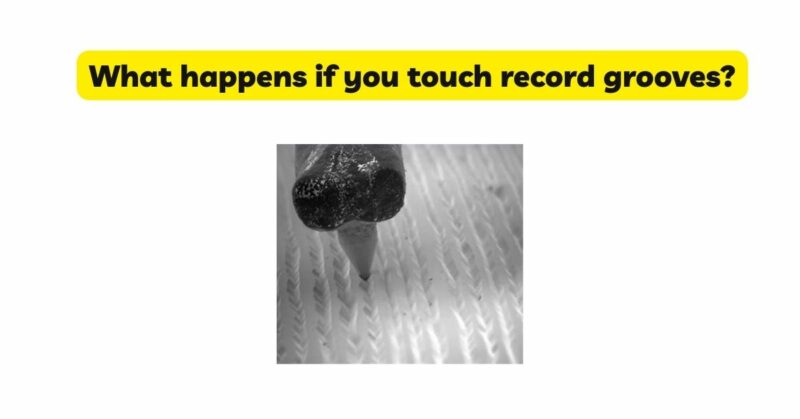Vinyl records have long been revered for their unique sound and tactile experience. However, there is ongoing debate about the consequences of touching the grooves on a record. In this article, we will delve into what happens when you touch record grooves, separating fact from fiction and exploring the potential impact on sound quality and record longevity. By understanding the delicate nature of grooves and adopting proper handling techniques, readers will gain valuable insights into preserving the integrity of their vinyl records while enjoying the tangible connection they provide.
I. Understanding the Sensitivity of Record Grooves
- Groove Structure: Vinyl records consist of spiral grooves that store the audio information. These grooves are intricately engraved on the surface and vary in depth, width, and spacing.
- Groove Integrity: The integrity of the grooves is vital for accurate playback. The stylus (needle) tracks along the grooves, converting the physical movement into sound.
II. The Potential Consequences of Touching Grooves
- Physical Damage: When you touch the grooves, the risk of physical damage increases. Finger pressure or the presence of contaminants on your fingertips can cause scratches, scuffs, or other deformations on the delicate groove surface.
- Sound Quality: Any damage to the grooves can result in compromised sound quality during playback. The stylus may encounter difficulty tracking the damaged areas, leading to skips, jumps, or distorted sound.
- Tracking Errors: Touching the grooves can disrupt the precise tracking of the stylus. It may cause the needle to skip across the record, resulting in an interrupted listening experience and potential damage to the stylus and cartridge.
III. Factors Affecting the Severity of Damage
- Pressure and Force: The amount of pressure applied while touching the grooves can influence the severity of the damage. Excessive force increases the likelihood of groove deformation and physical harm.
- Contaminants: Fingers naturally contain oils, lotions, and other substances that can transfer onto the grooves. These contaminants may not only affect sound quality but can also attract dust and debris, further jeopardizing playback performance.
IV. Best Practices for Handling Vinyl Records
- Minimizing Touch: It is generally advisable to minimize touching the grooves of a vinyl record to reduce the risk of damage. Focus on holding the record by its outer edges or the center label to avoid direct contact with the grooves.
- Clean Hands: Before handling records, ensure your hands are clean and free from any substances that could transfer onto the record surface.
- Proper Storage: When not in use, store records in their sleeves and keep them upright in a cool, dry environment. This reduces the chances of accidental contact with the grooves and helps maintain their integrity.
- Protective Measures: Consider using inner sleeves and outer protective sleeves to provide an additional layer of defense against dust, debris, and inadvertent contact with the grooves.
V. Conclusion
While the consequences of touching record grooves may vary depending on factors such as pressure, contamination, and overall record condition, it is generally best to avoid direct contact to preserve the sound quality and longevity of vinyl records. By adhering to proper handling practices, including minimizing touch, maintaining clean hands, and implementing protective measures, music enthusiasts can continue to enjoy the unique experience of vinyl records while ensuring their collection remains in excellent condition for years to come.

